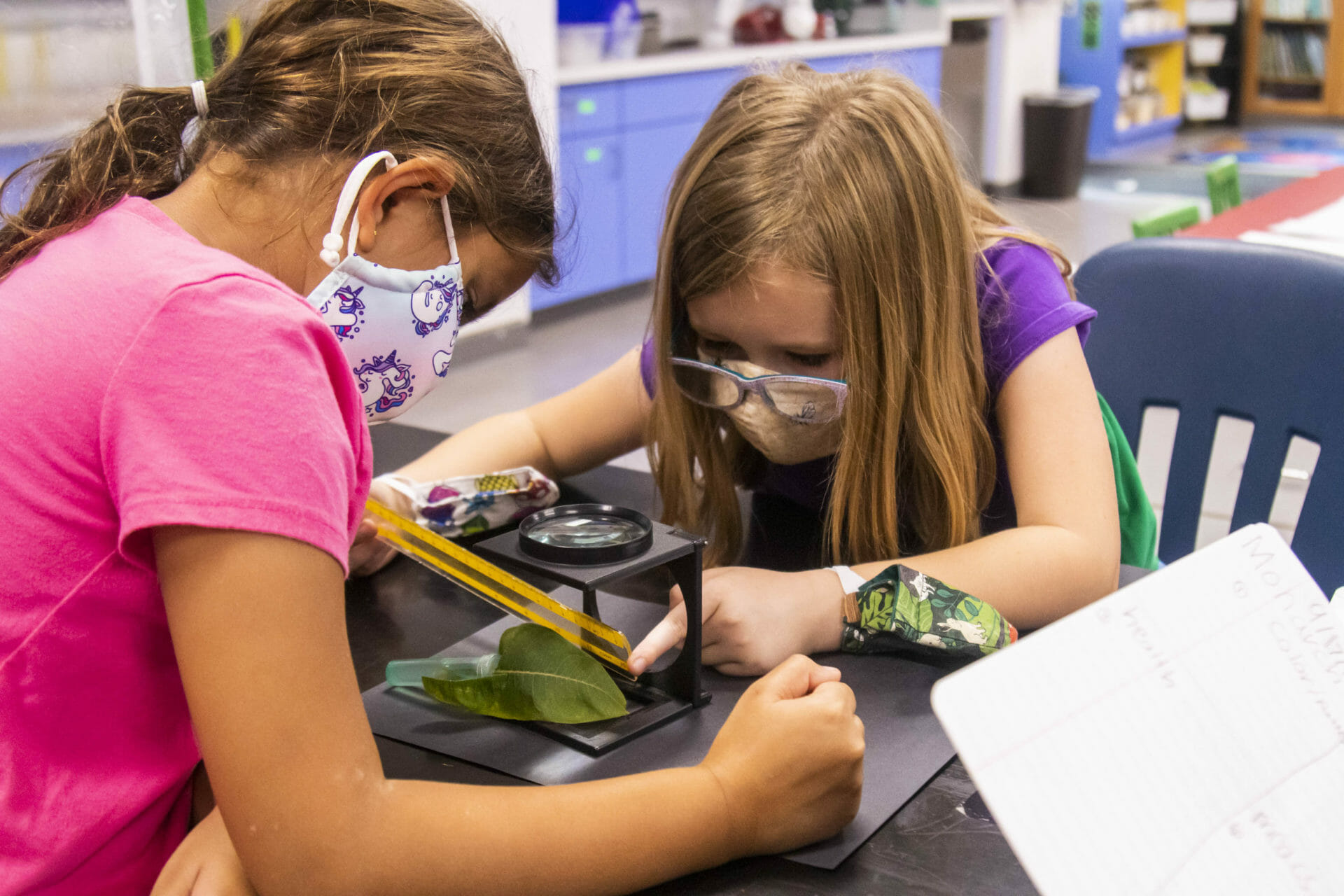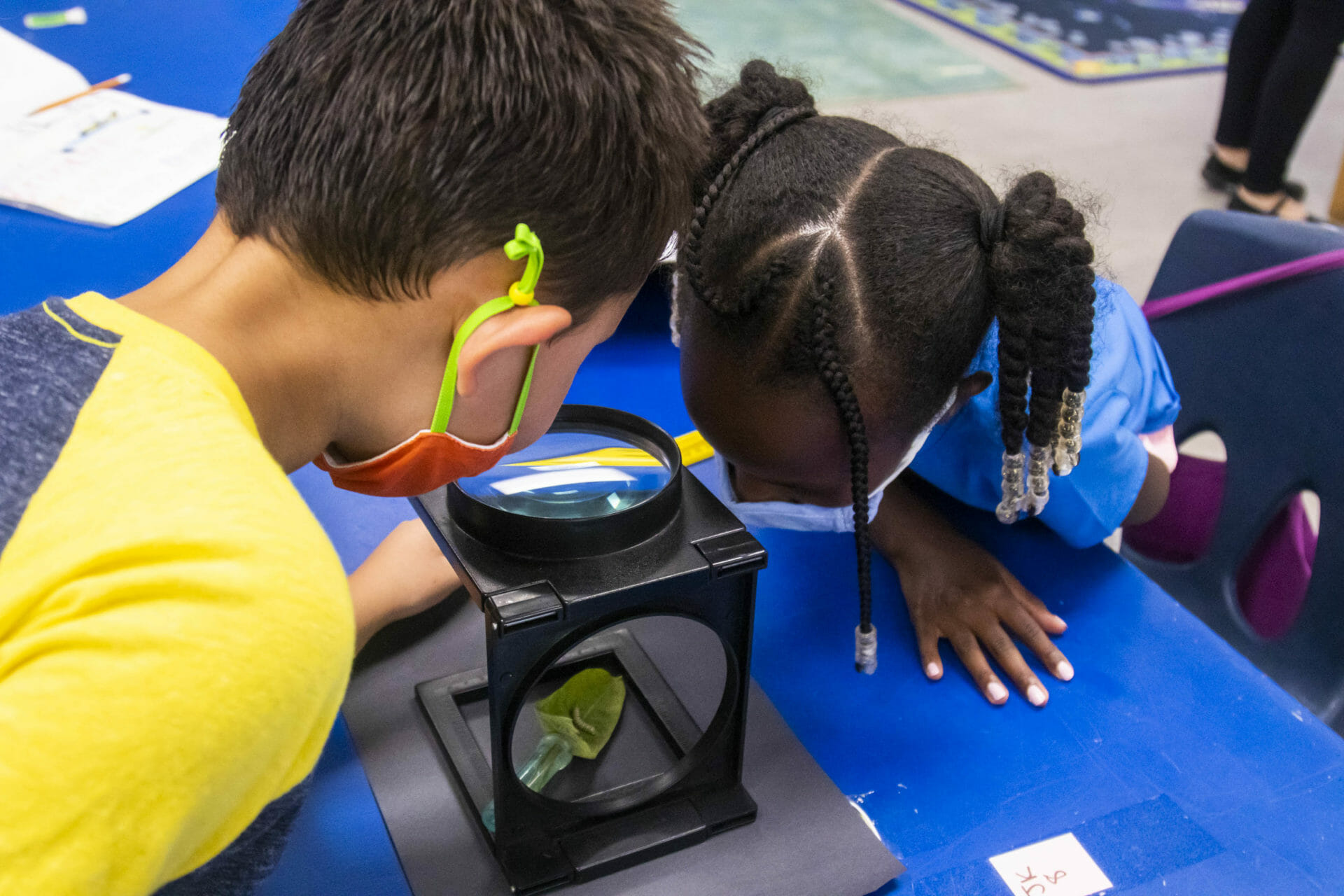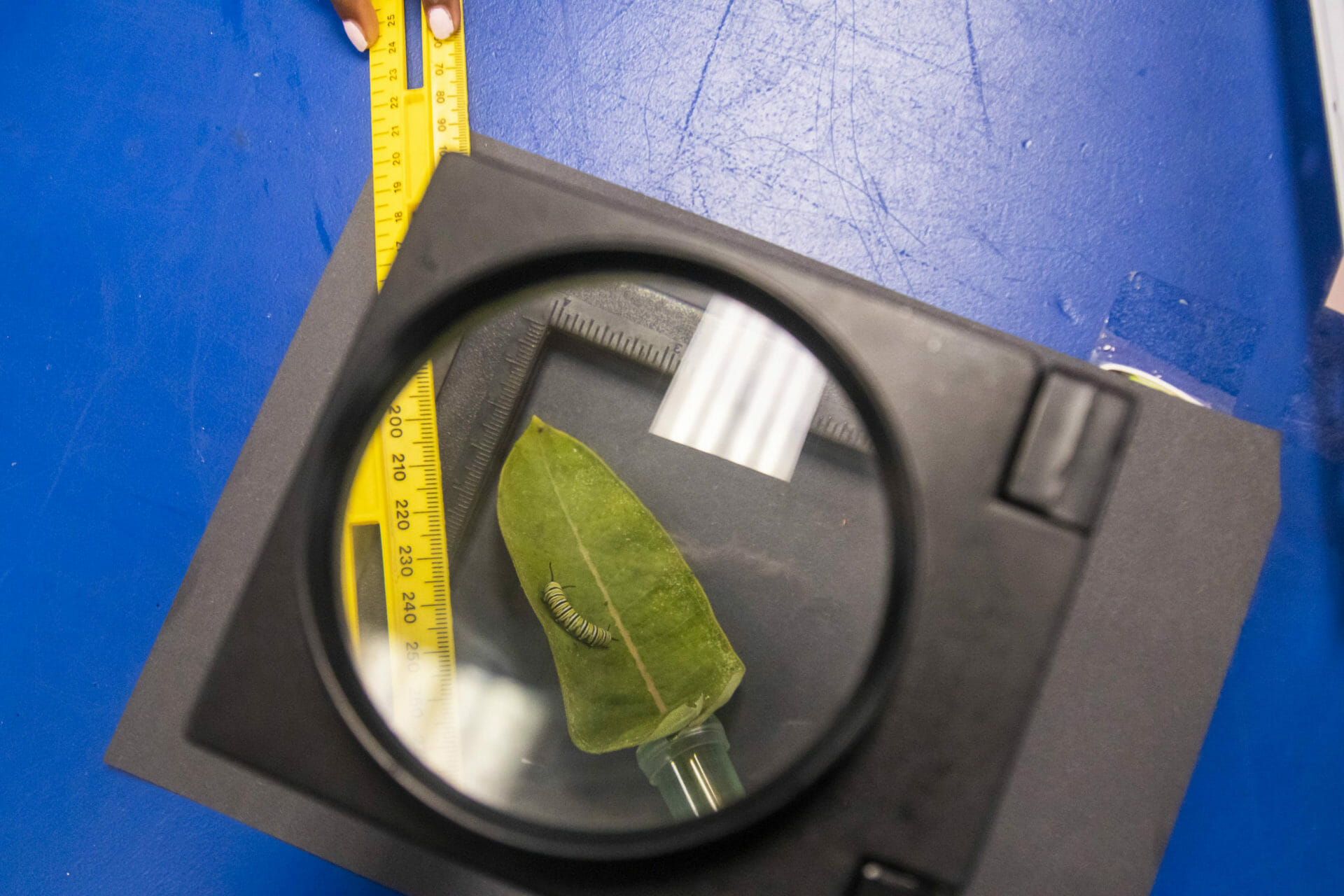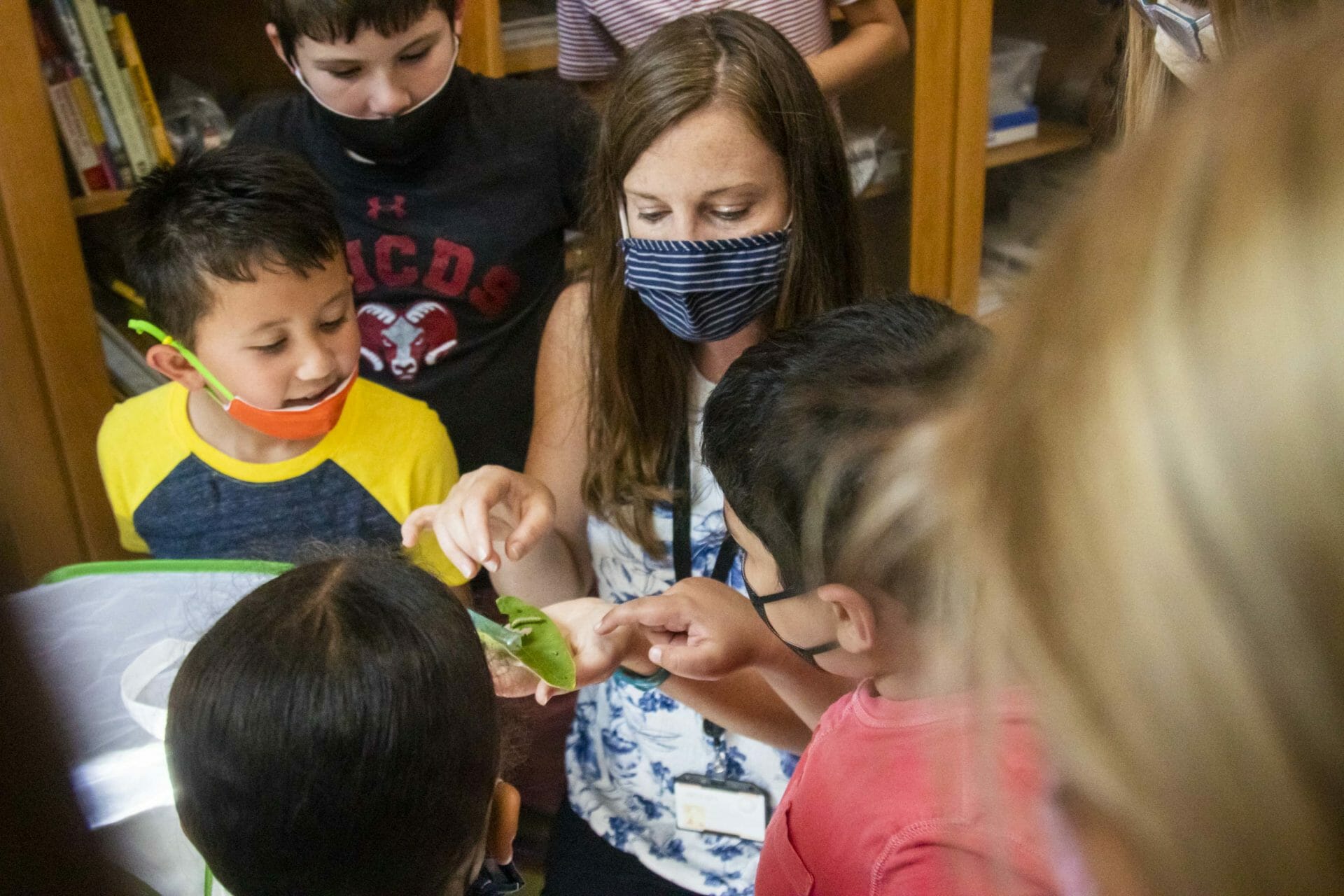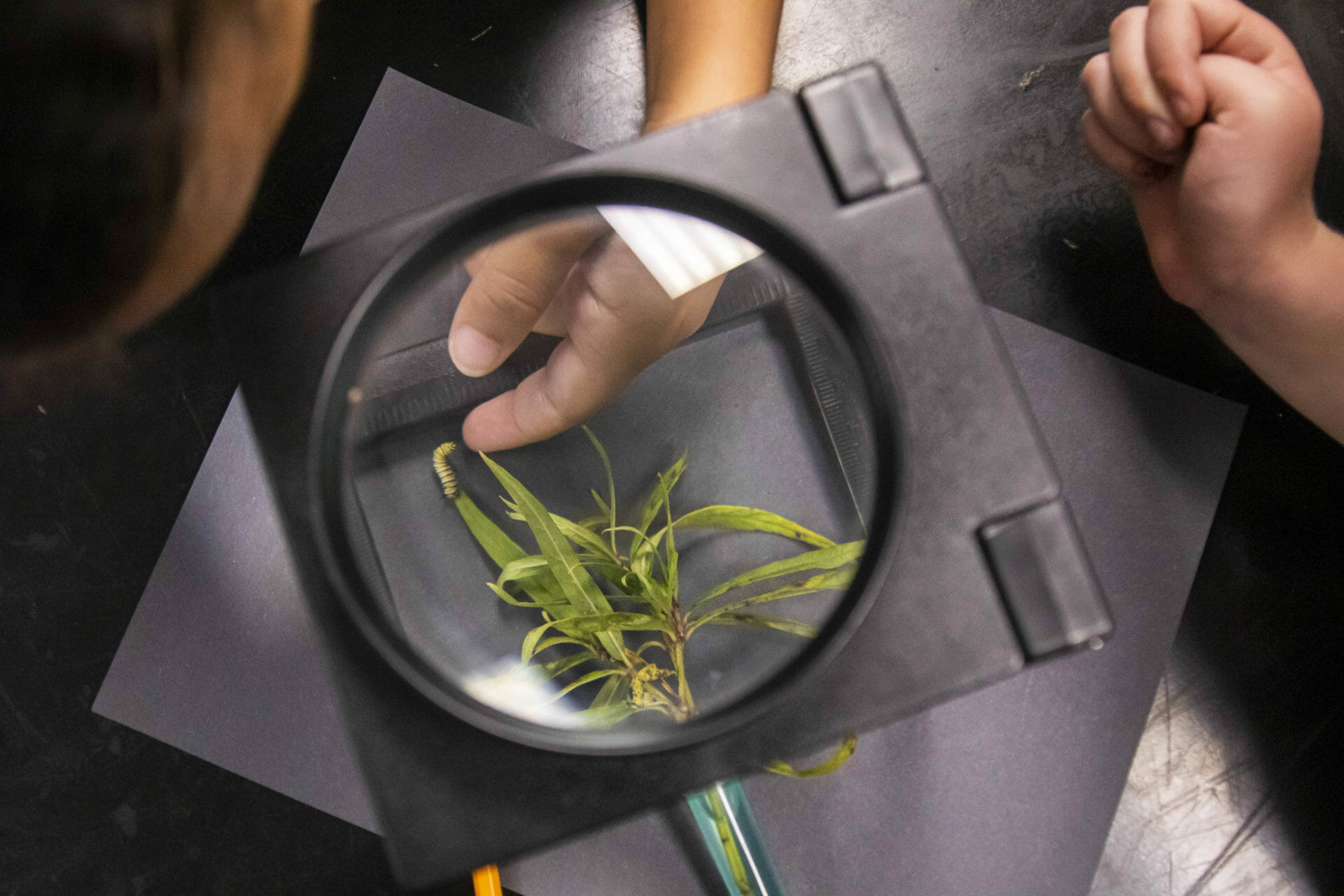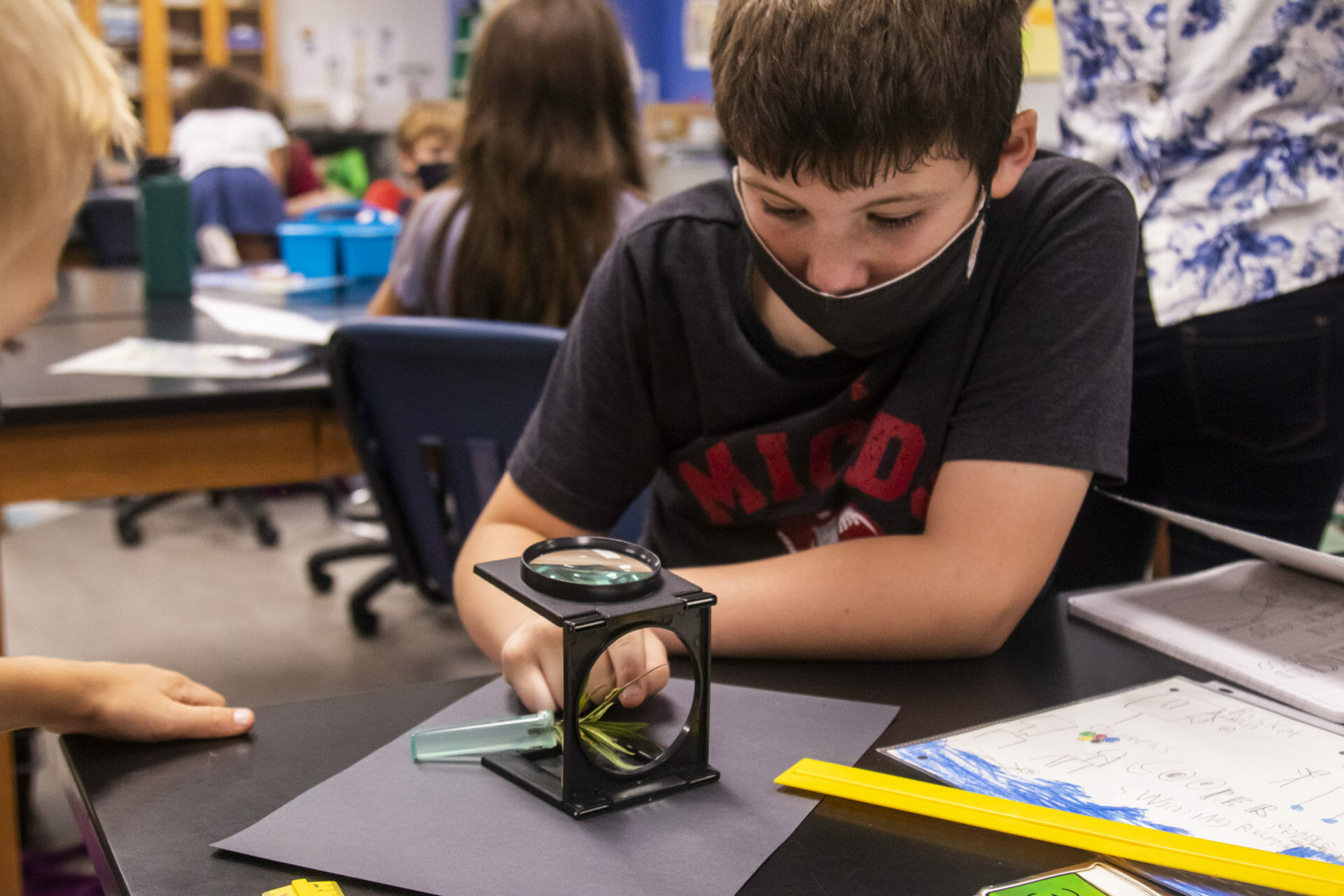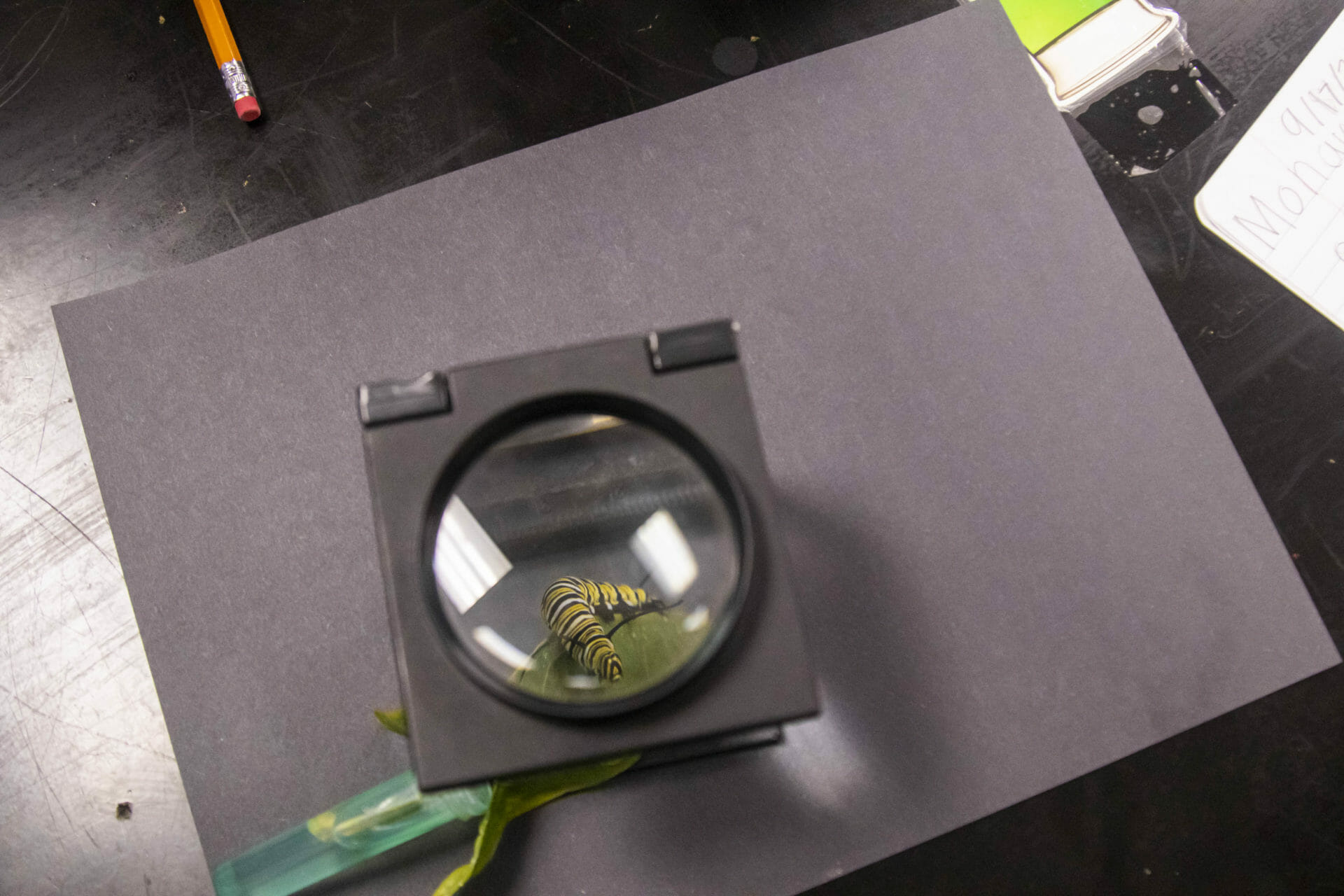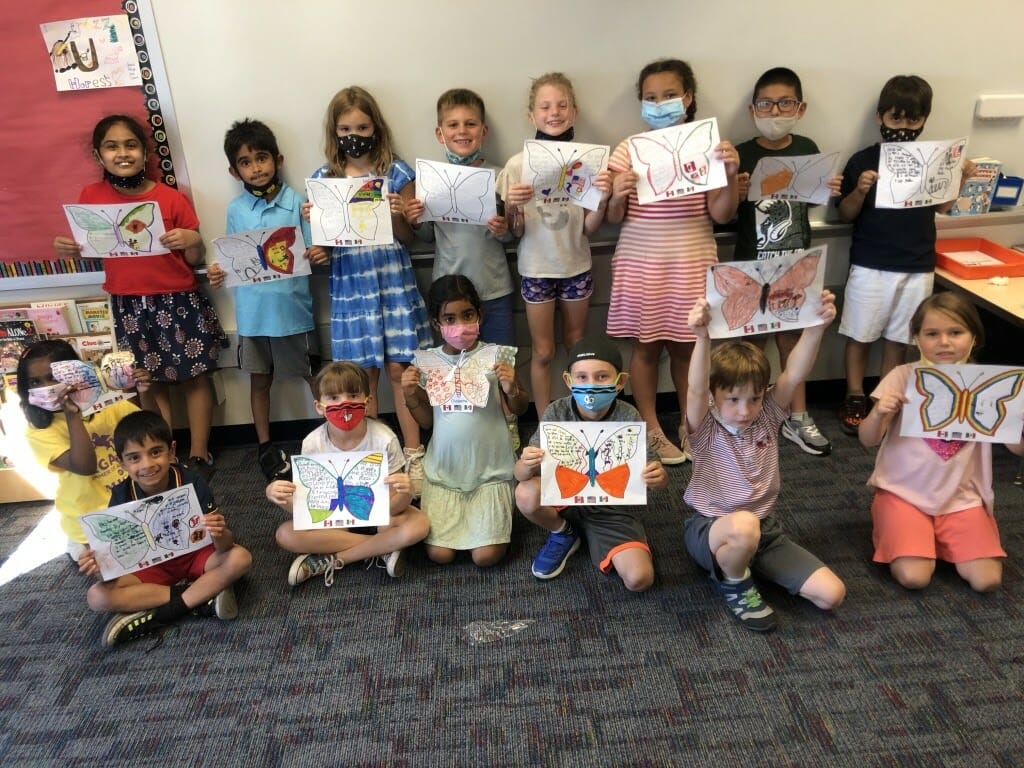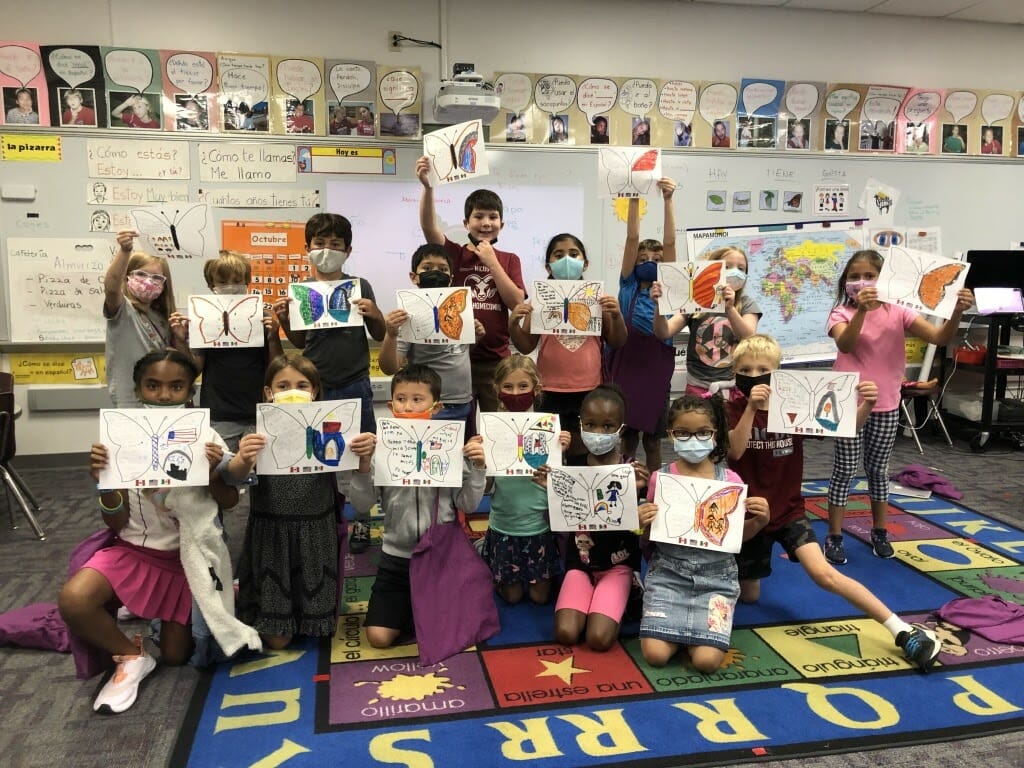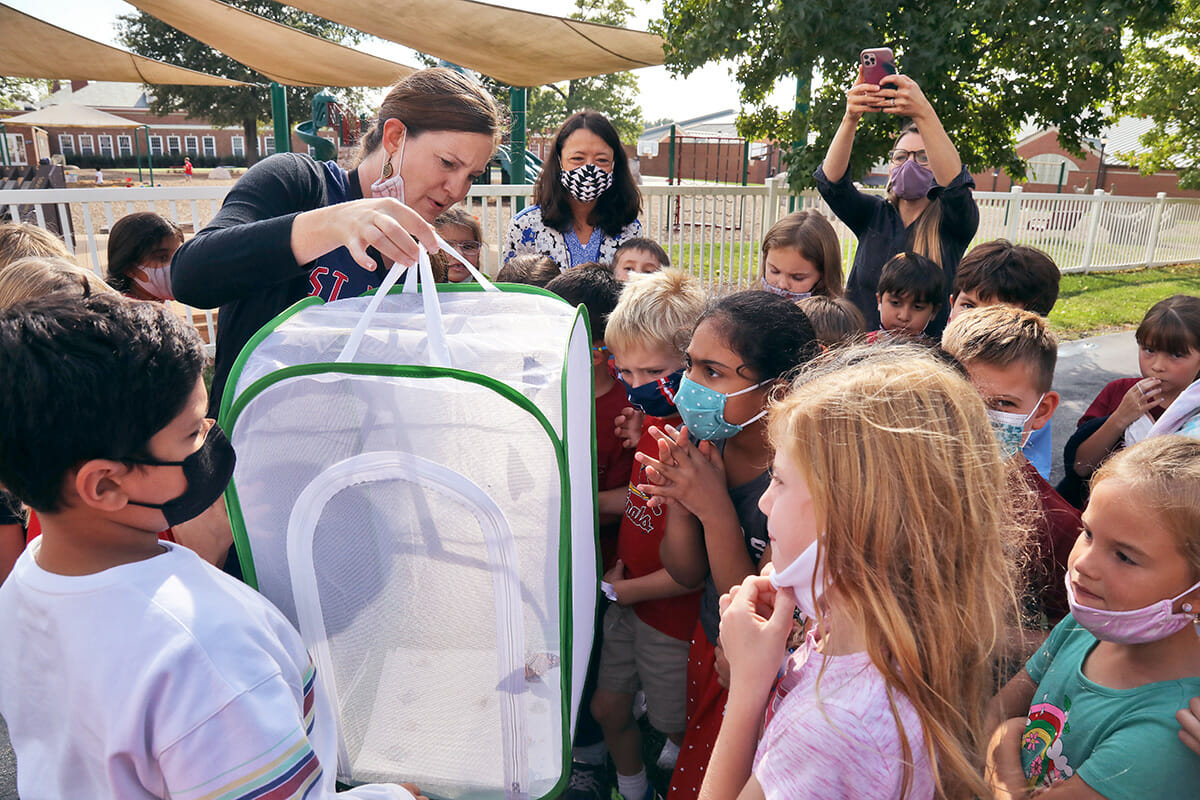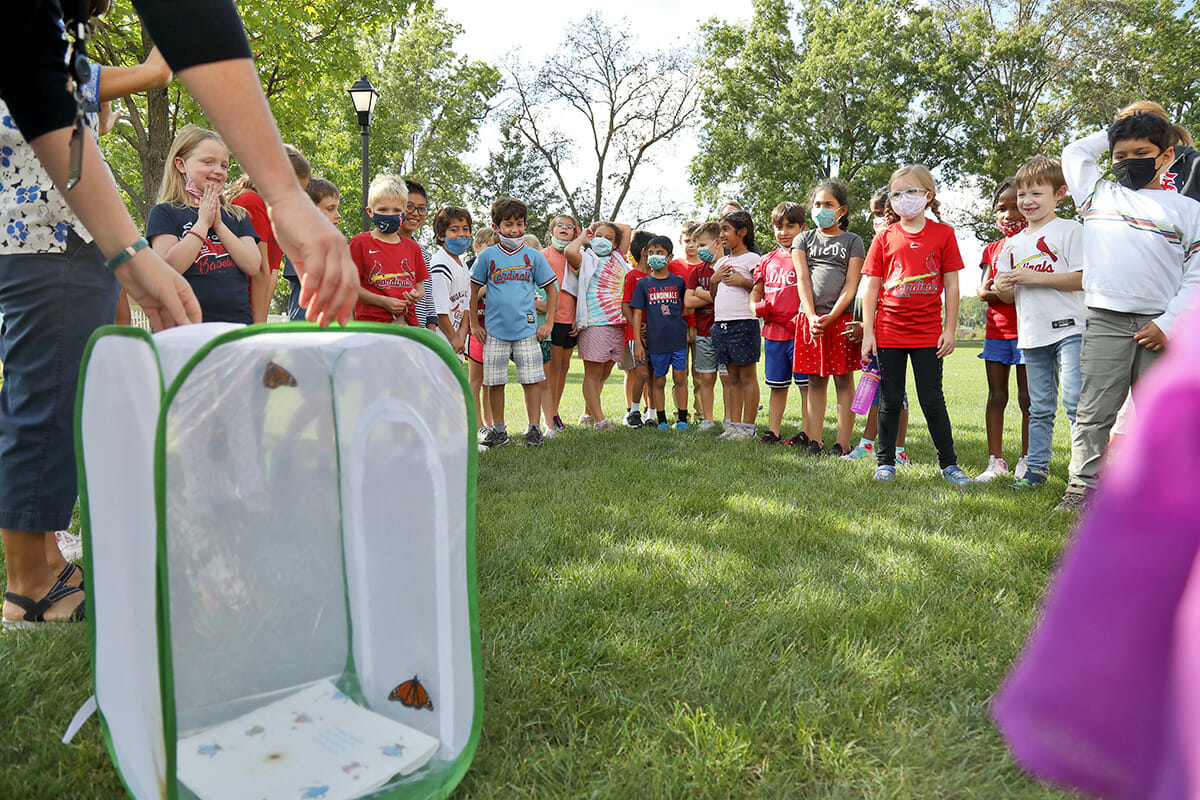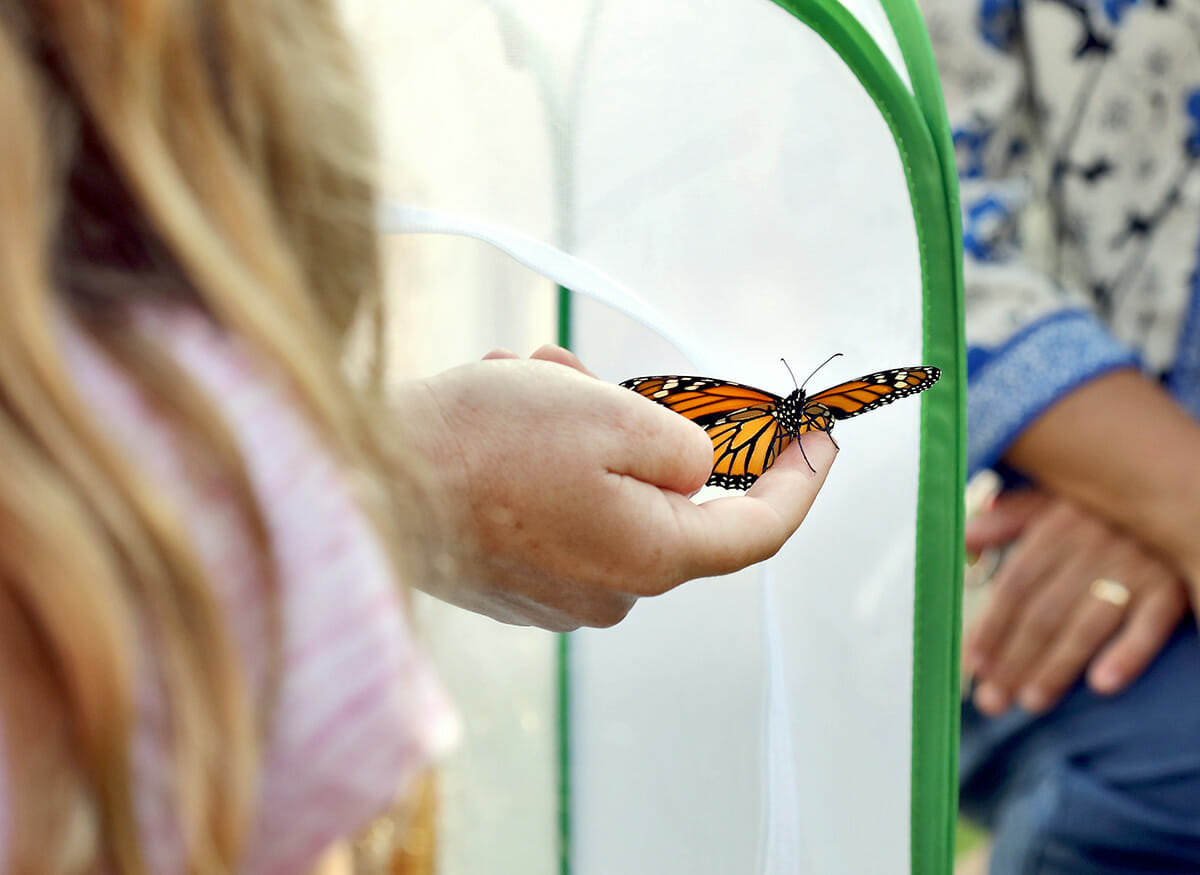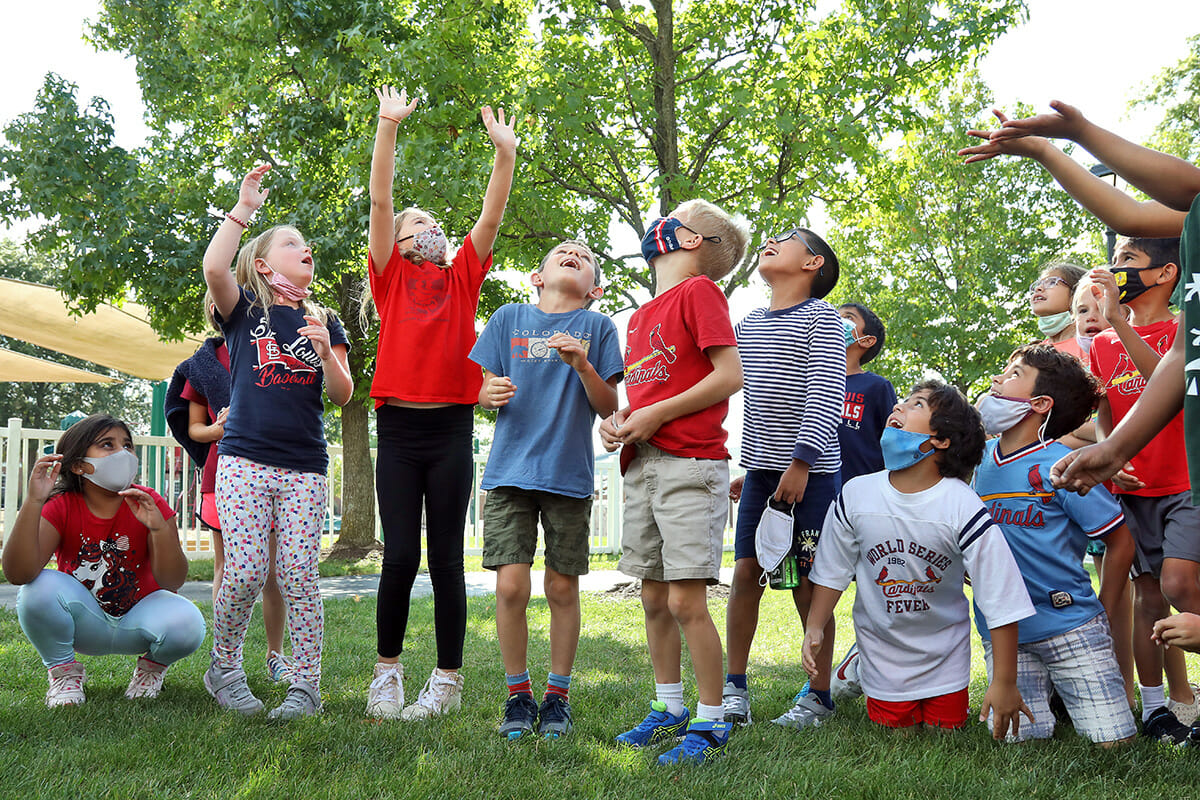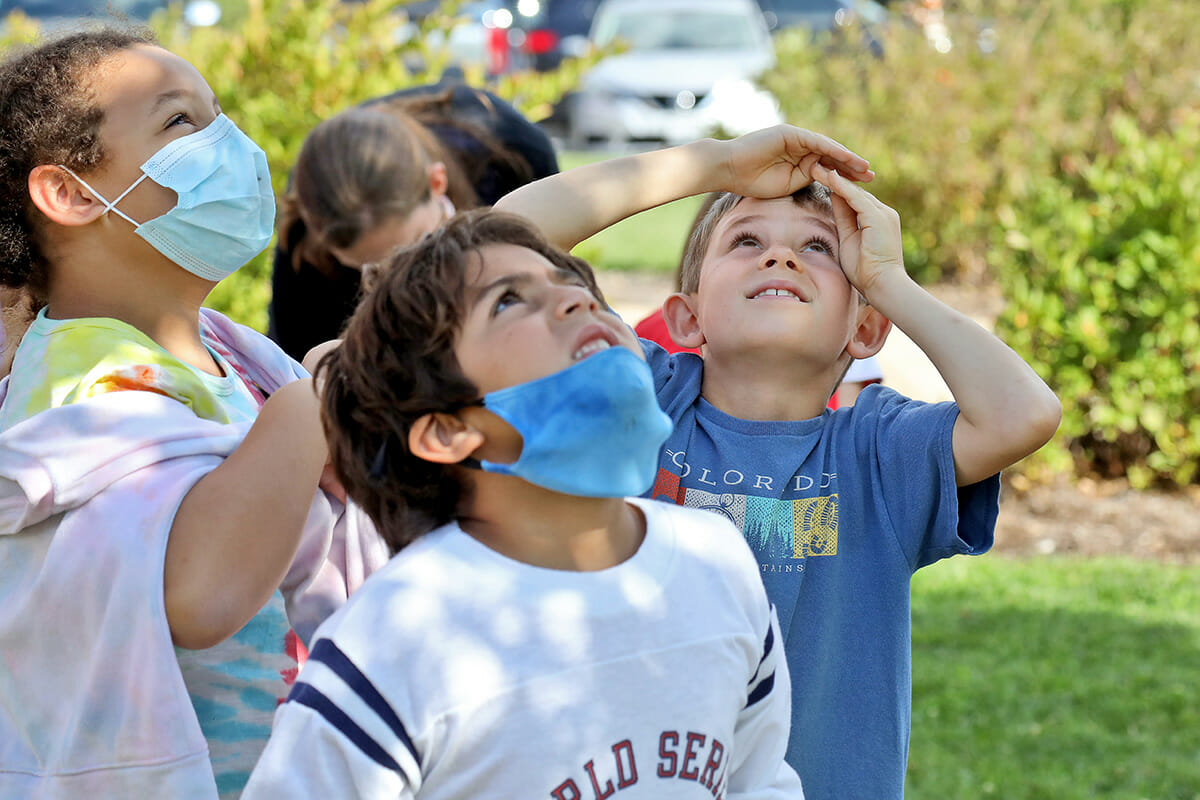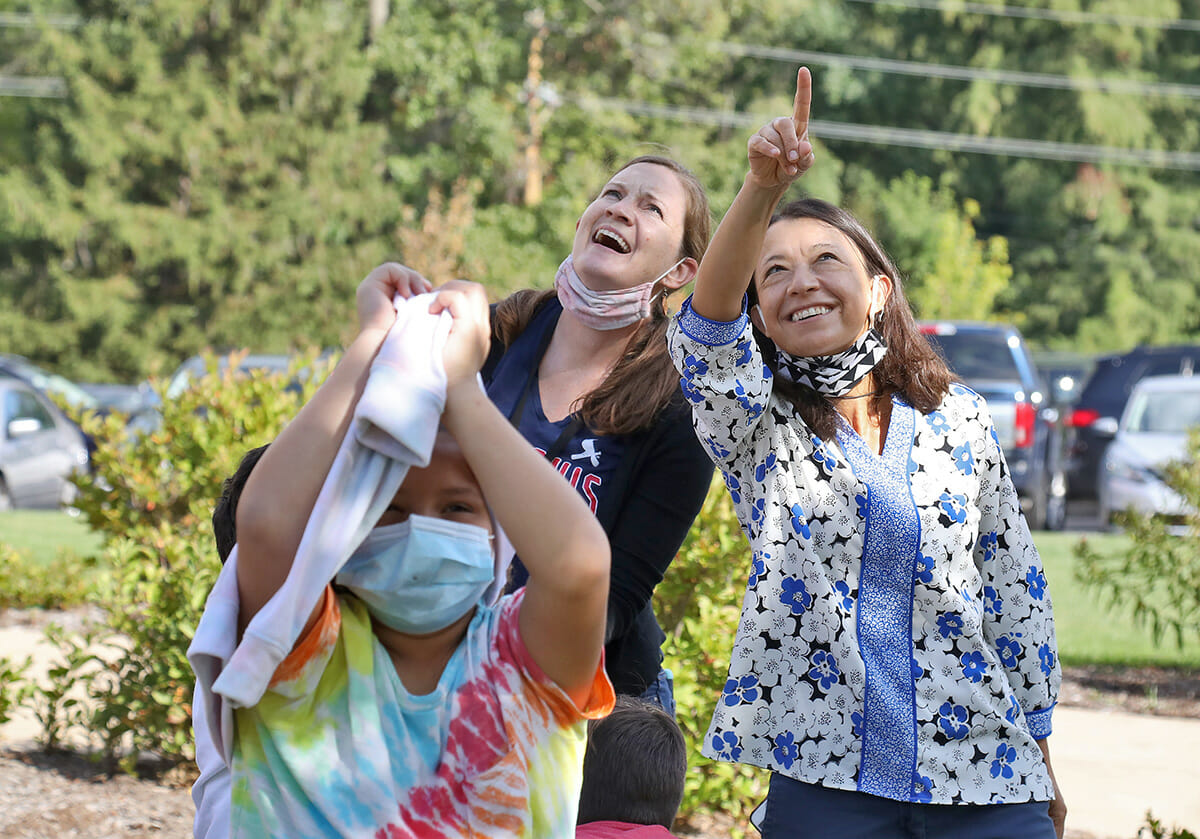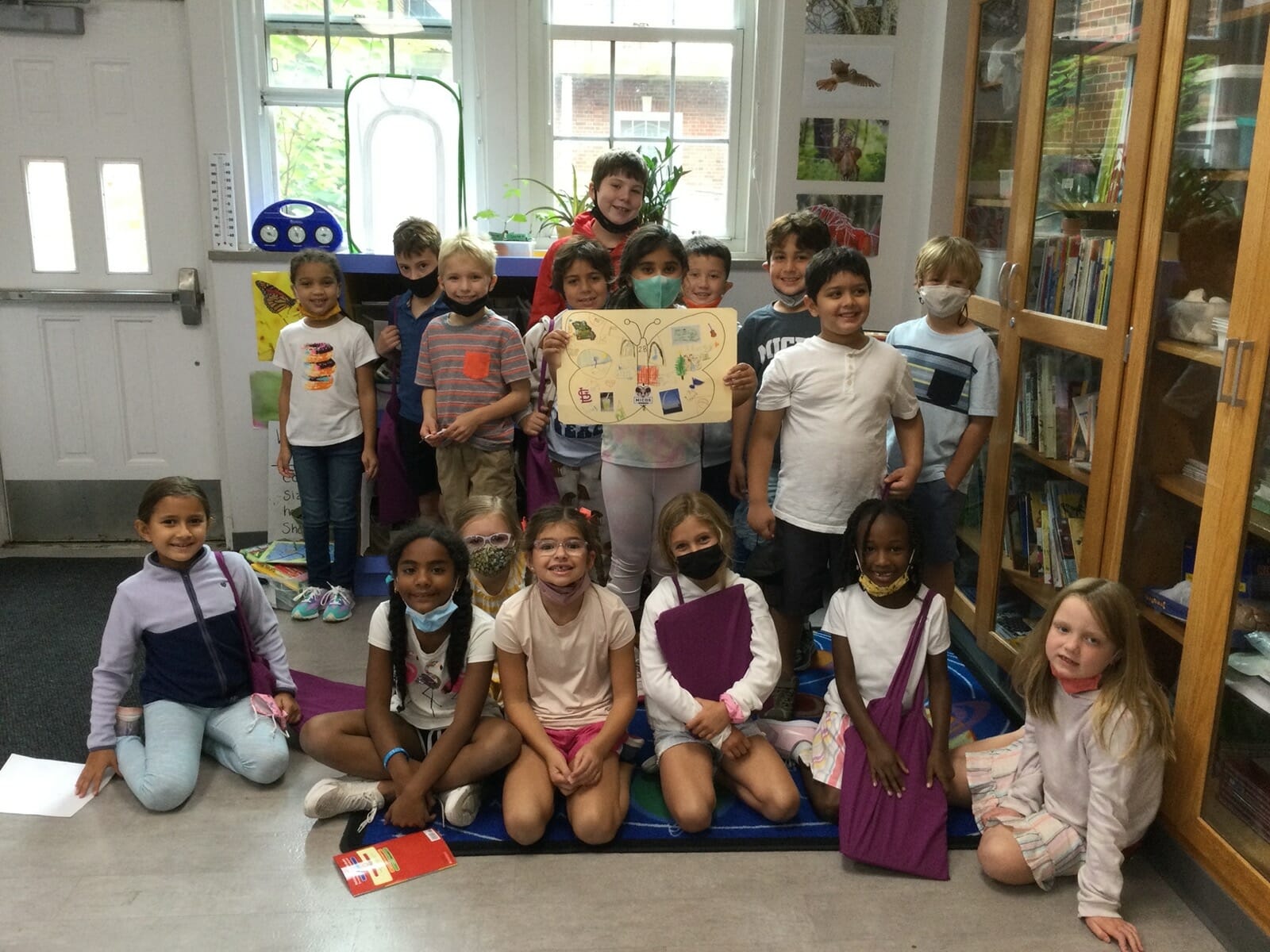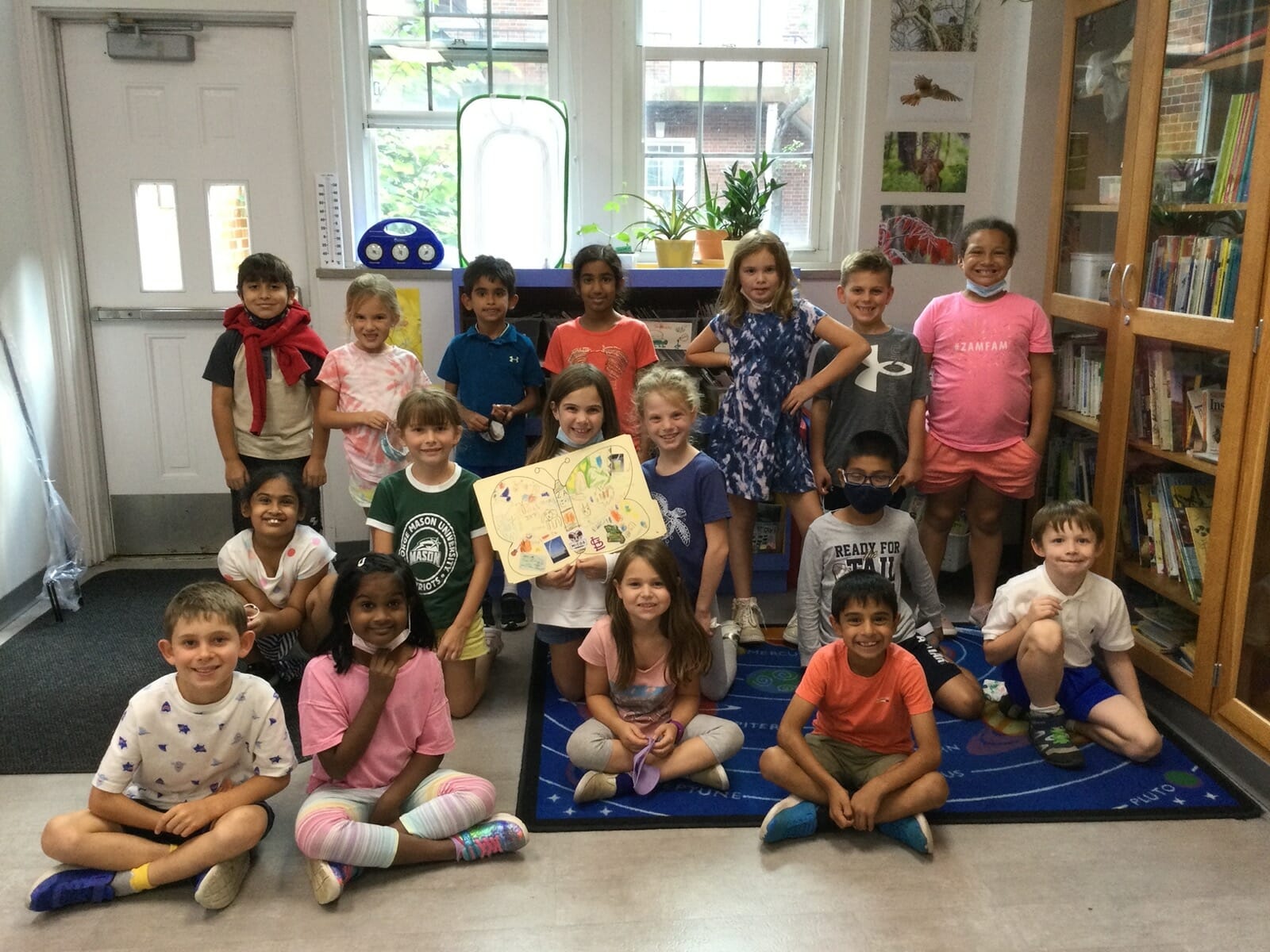By Soledad Villagomez, Lower School Spanish Teacher and Laura Pupillo, Lower School Science Teacher
Learning about insects went cross-curricular in the Lower School at MICDS! Second grade students learned about the life cycle of caterpillars and Monarch butterflies in both science and Spanish. They have been captivated by the world of the Monarch butterfly (danaus plexippus), studying the characteristics of the caterpillars, measuring their length, and making observations about their movements and eating patterns. Monarch butterflies, our beloved native butterfly with its bright orange wings laced with black and white dots, are often seen in late summer in nectar gardens and milkweed patches in the St. Louis region. If we’re lucky enough, we might even be greeted personally by one of these delightful creatures.
The students enjoyed reviewing the Spanish vocabulary connected to seasons and weather and how they can affect migration patterns. While they patiently waited for the caterpillars to get through the chrysalis phase, they discussed the process of the Monarch butterfly migration using the Spanish World Map. They found the three countries (países) where this migration occurs: Canadá, Estados Unidos (USA), and México.
As a staple of the MICDS Spanish curriculum, students then learned about a significant celebration of the Hispanic Countries called “El Día de los Muertos” or “Día de los Difuntos” (The Day of the Dead). The Day of the Dead is celebrated November 1-2 and remembers loved ones who have died. It is traditionally a bright and colorful celebration that includes a variety of food, music, and art.
“El Día de los Muertos” also coincides with the arrival of the migrant Monarch butterfly to the mountains of Michoacán in central Mexico. This arrival carries a strong cultural meaning for the people in Michoacán. The butterflies represent the souls of their ancestors who return to Earth to visit and reconnect with their family members and friends who are still alive.
As citizen scientists, students collected field data on campus and discovered that we have a large patch of common milkweed in our Beasley garden space, making our campus a great place to rear and track monarch butterflies. In Spanish, students explored the vocabulary of the four stages in the lifecycle of the monarch butterfly: egg (huevo), caterpillar (oruga), chrysalis (crisálida), and butterfly (mariposa monarca). The data we collected was entered into Journey North’s tracking system helping scientists answer questions about the monarch species. We looked for eggs and found a tiny monarch caterpillar, the start of our rearing project. Adding to this sweet caterpillar, came a small group of first instar caterpillars from the Monarch Watch program. With our caterpillar habitat set up, we took on the job of observation and feeding. Each day we collected fresh milkweed and cleaned their home. We observed our caterpillars were not only voracious eaters but also pooped a lot!
Finally, after nearly two weeks, we entered the next stage of development – the chrysalis (pupa). If you’ve never seen a monarch chrysalis, they are the most beautiful emerald green with shiny gold dots. We continued to watch with delight as we continued our study. We explored the migration path and learned that our monarchs would be what we liked to call the “super monarchs.” Most monarchs only live for a few weeks as butterflies, but the autumn monarch butterflies can live up to nine months. Using their superpowers, they would migrate to the oyamel fir forests in Mexico, nearly 3,000km away. Here, the temperature is just right for monarchs who spend the winter living off their autumn nectar reserves, small amounts of local nectar, and water. That’s right, they go nearly five months without eating much!
When the caterpillars in the Lower School science classroom finally emerged from their chrysalis stage and were ready to fly, 2nd graders enjoyed releasing them with a deeper understanding of this seasonal migration. They wished for the butterflies “Un buen Viaje a México” (A good trip to Mexico!) and “Adiós Mariposas!” (Goodbye butterflies).
As we explored this region in Mexico, we partnered with our Spanish class and joined the Symbolic Migration project, an ambassador program partnering students from Canada and the United States with students in Mexico. We wrote letters in Spanish to other children in Mexico and made both an ambassador butterfly and a lifesize monarch to send off just as our very own butterflies emerged from their chrysalis. Second graders introduced themselves by sharing their name, age, where they live, what they like, and a description of their families.
On October 6, we ventured out to the lawn behind Olson to release our butterflies. We wished them well on their long journey and opened their habitat door. With strong wings, they flew off. We were a little teary-eyed, but thrilled to see them fly knowing the long journey they had ahead. And although these butterflies will never make it back to St. Louis, we look forward to welcoming their grandchildren and great-grandchildren back next summer.
This might seem like a great place to end our story, but really we have just begun. The population of Monarch butterflies is in decline which has made their species a candidate under the Endangered Species Act. As Citizen Scientists, we will continue to do the work of educating others on the habitat needed for monarchs—milkweed for caterpillars, and a wide range of nectar flowers that will flower through the fall for butterflies. We will also look to improve our own habitat at school and in our own yards. As we do this work, we look forward to receiving a symbolic letter from our partner school in Mexico which will mark the start of the spring migration cycle. We hope you will also partner with us and help save the Monarch butterflies. Fly, fly, fly like a butterfly/mariposa.
Happy travels, butterfly friends!
